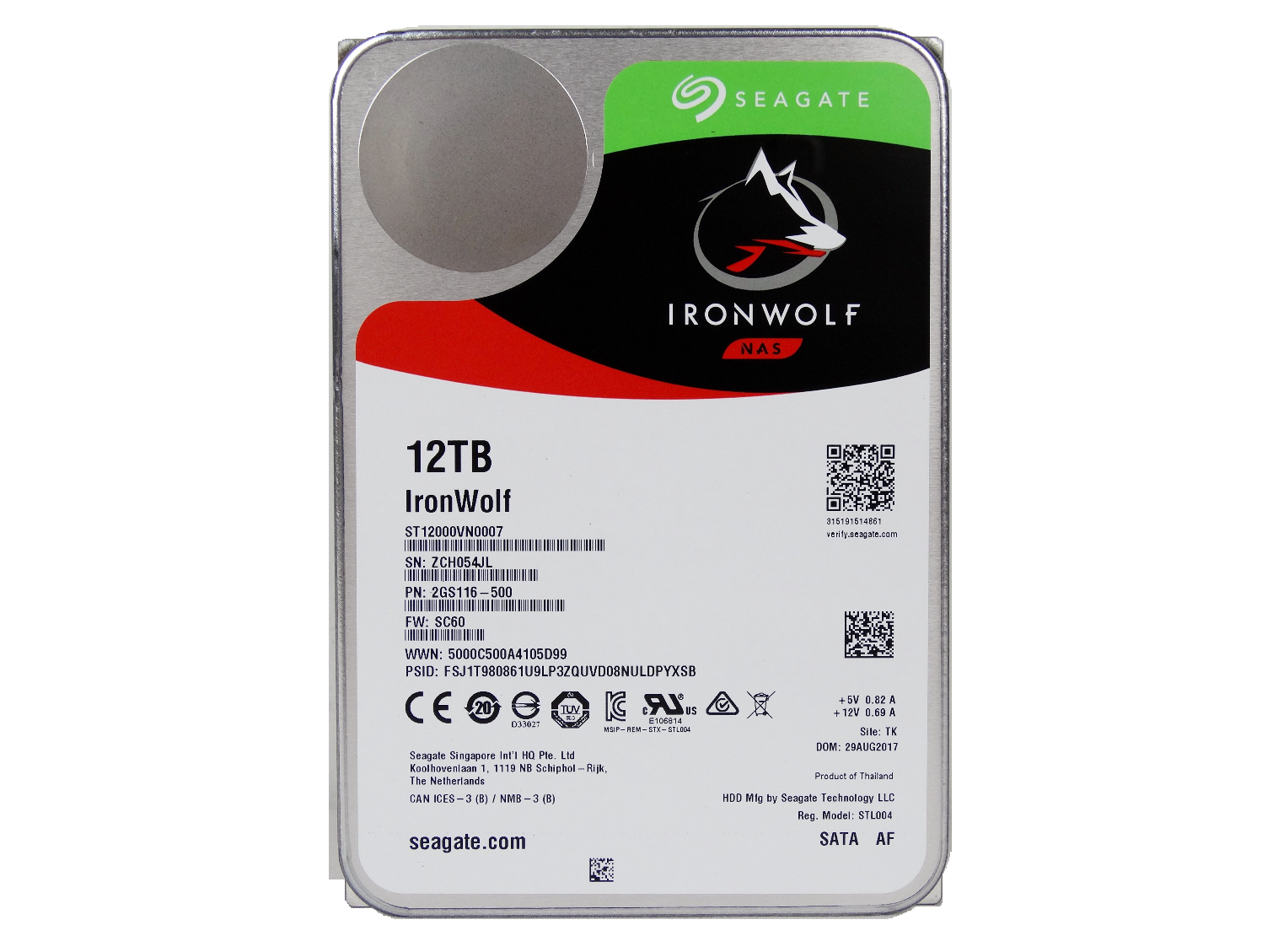Seagate IronWolf 12TB HDD Review
Why you can trust Tom's Hardware
Conclusion
The Seagate IronWolf and Western Digital Red fight for the same group of customers. Those are mainly people who use small-to-medium size NAS with one to eight bays. That market spans several types of users, from the digital hoarder at home to a small professional office. This is already one of the fastest growing markets, and analysts say it still has plenty of room to grow.
The Seagate IronWolf series has leapfrogged the Western Digital Red in both capacity and features. IronWolf is now available in 12TB while the Red just recently hit 10TB. It won't take long for Western Digital to release a matching capacity, but that only matches one feature. Seagate's move to 7,200-RPM for its entry-level NAS line is even more important than the capacity advantage. Western Digital hasn't given us any indication that the Red series will cross into the 7,200-RPM Red Pro market.
The drives are a speedy solution for your desktop PC, especially if you pair them with an SSD as the boot drive. Optane Memory breathes new life into the desktop HDD market, but the BarraCuda Pro is a better fit for the pairing, at least in most situations.
NAS use is a slightly different story. A NAS is just a purpose-built computer, but they are not built or tuned like a high-performance desktop. The power-saving features can nearly cripple performance. Some of the lower-end systems use settings that mimic notebooks that are designed to sip battery power for days. Larger systems like the Thecus N8880U-10G allow you to enter the BIOS and make changes. The manufacturers don’t document those settings, and they certainly don’t encourage modifications.
The restrictive default settings mean that many HDDs will perform the same in some systems. A faster drive must be much faster to deliver a performance increase because the marginal gains just get pulled back in the name of reduced power. In some cases, the system suffers from inconsistent performance, which is the worst-case scenario. That's been our biggest challenge with testing the latest NAS systems. A processor might have a base clock speed of 2GHz with a peak speed of 3.3GHz, but it will only operate at the boost frequency for a few seconds before it falls back to the base frequency.
The NAS performance situation makes choosing a drive easier. The new helium-filled drives are very high-quality products. It's too early in the life cycle to say if the new Red is better than the new IronWolf, and we may never definitively know which is more reliable.
The numbers we can work with come with a dollar sign in front of them. The highest capacity will carry a premium, and for that reason, we almost always recommend the second-highest capacity of a series because it is a better overall value. Five-bay NAS sell for only a little more than four-bay models. In our experience, it's almost always a better value to go with a five-drive RAID 5 array over a four-drive array.
Get Tom's Hardware's best news and in-depth reviews, straight to your inbox.
The manufacturer usually lowers the price of the previous flagship when a new flagship comes to market. We already see that in pricing at Newegg and Amazon. With the lower price, we have to recommend the 10TB IronWolf over the 12TB model if you don't need the increased capacity.
MORE: Best SSDs
MORE: How We Test HDDs And SSDs
MORE: All SSD Content

Chris Ramseyer was a senior contributing editor for Tom's Hardware. He tested and reviewed consumer storage.
-
StevenRix_from_France This article sounds like an apology to why Seagate's trust should be restored. If the 8Tb drives failed in a short amount of time, the similar products with bigger space might just do the same thing. Changing the segment name to make us think those products won't fail again is just a frivolous marketing stunt. There are too many problems with Seagate's drives: predictive failures that happen a few weeks later, the platters are bad quality, firmwares that are often buggy, and probably planned obsolescence, are just enough redflags as to why this company is not serious enough to stay in that business' segment.Reply
I also read the article twice, there are a bunch of affirmations that I completely disagree with, it's not even a different point of view, it's just a point of view based of presenting a situation and a reality in a given time (example Seagate increased product quality, but prices also shot up). It's always the same thing, prices go up to get the executives bigger bonuses, nothing else. That being said, there are fortunately other competitors in the market. -
okenny what about power consumption and heat?Reply
WD has vastly reduced watt/GB on their most recent models... -
sstanic But the noise numbers are OK..no, wait, there are no noise numbers. If only our smartphones could measure it.. And WD Red and Red Pro 10TB are available for a good while now, not "just recently". They are made with HGST Helium technology, a big plus.Reply -
decker.davison shoot, I had been eyeballing the 6TB to buy a couple for a raid 1 mirrored array to replace my 2000GB barracuda array that's degraded from a single failed drive after running fine for at least 5 years. these comments are making me hesitant even though I had been all about Seagate early last decade.Reply -
honorousjack Same here Decker. All I want is a large fast drive, I've been doing research on Ironwolf and other drives but these comments seem a little bit biased, don't they?Reply
